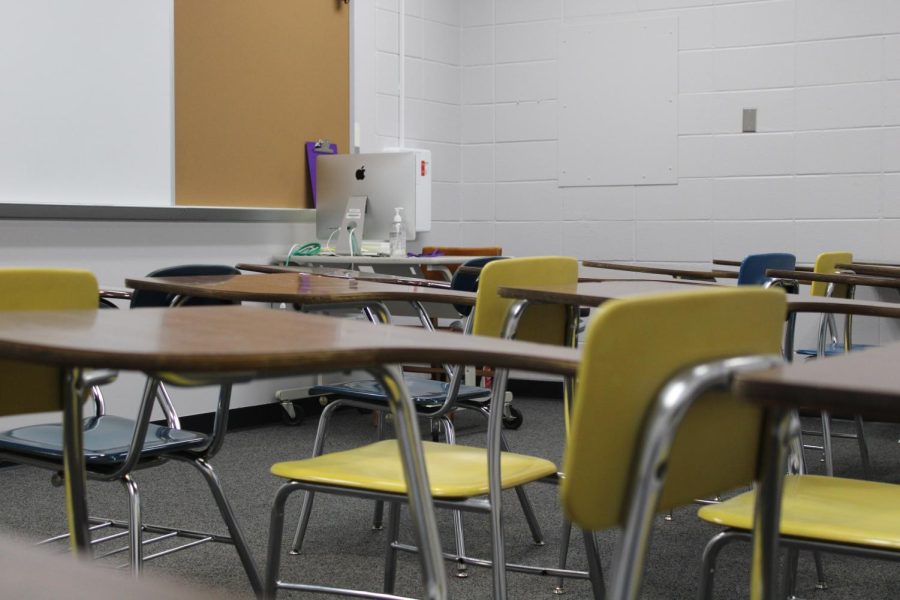Lack of Equity in Teaching Profession Impacts Student Learning
Though our local suburbs like to preach and teach equity and equality, there is one difficult element to these notions in our schools: diversity. Even many white educators have lacked instructors of color. Their whole lives they have had adults around them who were the picture of “success.” They have gone to college, earned an education, and have stable, good paying jobs. They have found inspiration in others around them, most often with one skin tone. However, for many minorities, especially those who are first generation students, success isn’t the amount of money someone makes or the title they have, but for a first generation student, attending college is one of the many ways to fulfill the “American Dream.” In fact, there are many Hispanic students who are the first in their family to go to universities. This does not change the fact that they are growing up in our educational system, and they still do not have people for inspiration and help that look like them.
Despite the hope that schools like RMHS can really inspire all students, for some, the best inspiration is seeing someone who has grown up in the same culture achieving a high level of success. Not only do these students find inspiration in their like-cultured role-models, but they find that they succeed academically in a way not seen before simply because they have inspiration from the same background.
According to research done by Anna Egalite, “students who have had even one same-race teacher during their time in elementary and secondary school experience a wide variety of benefits that include higher test scores, lower rates of chronic absenteeism, fewer suspensions, higher rates of recommendation for gifted and talented programs, higher rates of enrollment in advanced courses and higher rates of high school graduation and college enrollment.”
Not only is diversity seen by these students, but they find that they succeed academically at higher levels because of it. It is not the fact that they didn’t find success with white teachers, but rather that these culturally-diverse teachers were, more often than not, in the same seats as the students were when they were younger. They inspire them in a way that white teachers cannot because they have gone through similar experiences. Students with similarly cultured instructors also feel happier, heard, seen, and represented.
“I’ve never had a teacher of color,” English and EL teacher Kelli Lussow said. For her, as a white person, it didn’t make a big difference. However, for people who don’t look like her, there is a sense of sadness due to the lack of diversity in formalized public (and private) education.
For some it’s not being able to relate to their teachers at a deeper level, and for others it is having teachers treat them unequally because of their race and ethnicity. Some students simply feel underrepresented and unheard.
A few months ago, RMHS was devastated by the posting of a video of a boy saying racist slurs. The video went viral, and the way it was handled, according to many students, was inappropriate. Many felt that topic wasn’t taken as seriously as it should have been. Whether it was the lack of understanding for other cultures or simply the fact that so many in the building have never had to struggle because of the color of their skin, the response was underwhelming and frankly disappointing to many students of color. Perhaps if there were more administrators of color, the situation would have been addressed differently, and allowed students to come to peace with handling of these topics, specifically ones that reflect not just the color of students’ skin, but their entire existence.
“In district 214 we have something like 12,000 students and [I believe] about 80 percent of our teachers are white,” said Lussow.
Although there is more training occurring now to inform teachers about the importance of equity and equality, it is equally as important that schools hire more teachers of color, especially when there is a large percentage of students of various ethnicities and races. The benefits of having instructors that aren’t white doesn’t necessarily surpass the benefit of training to get a whole school community on board with equity, but the truth remains that many students of color find success when they have teachers of the same race. In fact, studies even show that white students benefit from the diversity.
“Having a diverse teacher workforce sends a powerful signal that adults from all backgrounds have important contributions to make in our schools. Better representation is not just beneficial to students of color, but it can be valuable for white students too. Those who advocate for diversification in the educator labor market often make the case that positions of influence, power and authority in our educational system should reflect the multicultural society in which we live,” said Ph.D. Professor Anna Egalite.
While it is admirable that our District schools are starting to implement diversity, there is still a long way to go. If schools like RMHS try to actively implement equity amongst staff and students and increase the hiring of diverse educational personnel, in the near future there will be much greater success amongst all students. This is not only a wish from our diverse population, but it is a necessity, as it is important to reflect the society that we live in today. All students will truly benefit from diversity, different cultures, and new perceptions offered by teachers of different races and ethnicities.
“White culture is ingrained in education,”said Lussow. Diversity can really help change this issue, welcoming all people and beliefs into the classroom. Students will have the ability to learn about new cultures from their educators with real life experiences, and most importantly the curriculum can change so that students find themselves succeeding because the educational system finally encompasses all cultures and belief systems.


